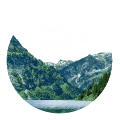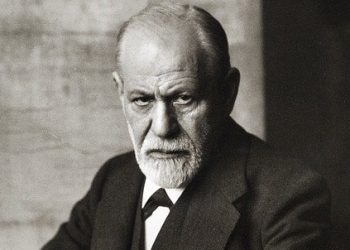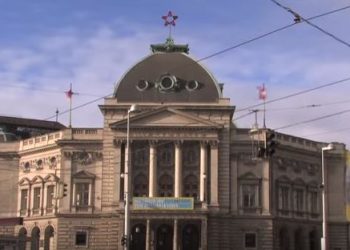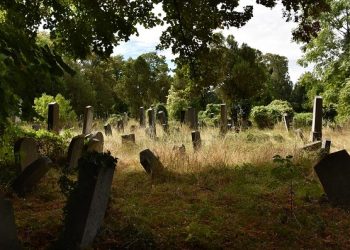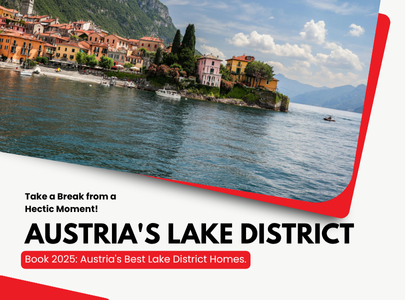This article provides a comprehensive overview of Belvedere Palace in Vienna, including its two main palace buildings – the Upper and Lower Belvedere, the stables complex, the greenhouse, and the impressive gardens.
Furthermore, there is detailed information about the various museums within the Belvedere Palace complex, including details on the art exhibition in Upper Belvedere Palace, where “The Kiss,” Gustav Klimt’s famous painting, is located. You can also book tickets in advance for the exhibition featuring “The Kiss.“
The first part of the article will cover the entire complex, what’s found in each palace, what’s included in the palace gardens, and more. Following that, there’s a detailed section on the art exhibitions and various museums within and around Belvedere Palace. Finally, you’ll find essential information for your visit, including public transportation options, opening hours, advance ticket booking, and more.
Let’s begin with an explanation of the palace and its parts:
Belvedere Palace
Belvedere Palace is located in the 3rd district of Vienna and is actually divided into two separate palaces: the Upper Palace and the Lower Palace. Both Belvedere Palaces were built in the early 18th century, during a period of significant development and prosperity for Vienna, following several victories against the Ottoman Empire. The palaces were intended to be the summer residence of Prince Eugene of Savoy and were built in the Baroque style by the famous architect Johann Lucas von Hildebrandt. Between the two palaces, there are charming and beautifully maintained gardens. Today, walking through the gardens is open to the public and it’s free!
Here’s what the Belvedere complex and its gardens look like:
Important Buildings within the Belvedere Palace Complex
1. Upper Belvedere Palace (Oberes Belvedere)
The construction of this palace began in 1717 and lasted five years, until 1723. The ambitious project was completed quickly, but in the years following its completion, it became clear that the entrance hall (Sala Terrena) was poorly constructed. This led to a full year of renovations and repairs in 1732. Since then, the palace has not undergone significant changes and has been wonderfully preserved. The primary role of this palace was to showcase the wealth and prestige of the royal house, and it was used to host representatives of states and important guests of the Habsburg dynasty. Towards the end of the 18th century, the palace was converted into the Imperial Gallery, and a variety of paintings were transferred to it from the Hofburg Palace and displayed to the public. Today, the palace houses the largest collection of paintings by the famous artist Gustav Klimt, including his most renowned work – “The Kiss.” Click here to book advance tickets to the palace and the Klimt painting exhibition.

Main Rooms in Upper Belvedere Palace:
- Entrance Hall (Sala Terrena) – This section was initially built as a spacious hall, but after being at risk of collapse in 1732, four supporting columns were added to hold up its vaulted ceiling. From the entrance hall, you can exit to the palace garden on one side, and on the other, it leads to the magnificent grand staircase.
- Grand Staircase (Prunkstiege) – The original entrance to the palace was from its southern side, leading to the magnificent grand staircase that ascended to the main floor of the palace. In this section, the walls are adorned with impressive frescoes depicting Alexander the Great’s victory over Darius, King of Persia. The ceiling was once covered with a large painting, but due to problems with the roof’s construction, the painting was removed in the 19th century and replaced with the rosette decoration still present today.
- Carlone Hall (Carlonesaal) This exquisitely illustrated hall is named after the artist and painter Carlo Innocenzo Carlone, who was responsible for the artworks adorning it. He painted the impressive ceiling fresco depicting the triumph of the Roman goddess Aurora. The cool temperature maintained here even throughout the summer provides a pleasant and cool spot for visitors to the palace during the hot summer months.
- Marble Hall (Marmorsaal) – This hall is the most impressive in Upper Belvedere Palace. It is the first room entered after ascending the stairs and is divided into two levels. The hall is adorned with wonderful paintings on its walls and ceiling, and its marble floor gleams with a reddish-brown hue. After World War II, in 1955, this hall was used for the ceremony where the Austrian State Treaty was signed, making Austria a sovereign state. Today, the impressive Marble Hall is open to visitors.
- Palace Chapel (Schlosskapelle) This room is wonderfully preserved and is one of the most impressive rooms in the palace. The chapel has two levels. On the lower level, palace staff would gather, while the upper level was reserved for the nobility. The room is built in an octagonal shape, with decorative columns in each corner. The large windows, marble floor, and ornate ceiling are reminiscent of the Marble Hall. In the altar area, there is a painting depicting the resurrection of Jesus. This painting was created by Francesco Solimena and took about 10 years to complete. Additionally, there are two large statues of Jesus’s apostles. Even today, a prayer service is held in the chapel every Sunday at 12 PM.
2. Lower Belvedere Palace (Unteres Belvedere)
The Lower Palace was built before the Upper Palace. Its construction began in 1712 and concluded in 1716. The entrance to this building was through the main gate near Rennweg, which led to the central courtyard. The original entrance led directly to the central Marble Hall. Lower Belvedere Palace primarily served as a residence, but it also housed several collections belonging to Prince Eugene.
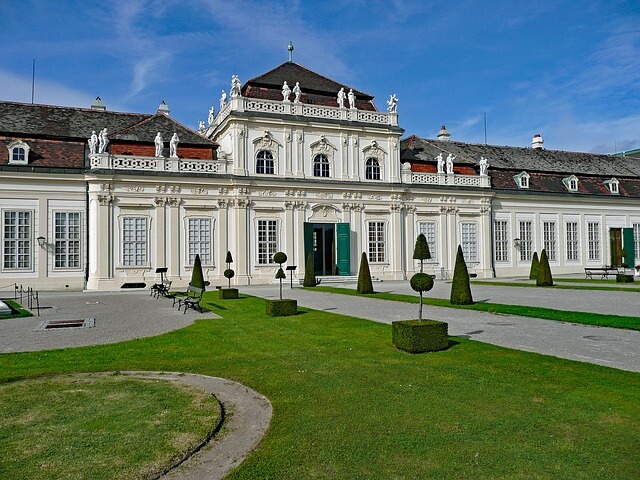
Main Rooms in Lower Belvedere Palace:
- Marble Hall (Marmorsaal) – This hall was primarily used for hosting official ceremonies for important guests. The hall is divided into two levels. Its walls were built in a manner reminiscent of triumphal arches and are adorned with various decorations hinting at Prince Eugene’s military victories. The impressive ceiling painting is the work of artist Martino Altomonte and depicts the story of Apollo in his sun chariot.
- Marble Gallery (Marmorgalerie) This area of the palace was likely designed to display three marble statues of women from the Roman period. These three statues are known as “The Herculaneum Women” and were exhibited in this room. In 1736, the statues of the women were sold to the Dresden government, and in their place, three other statues specially sculpted at the Prince’s request were installed. The walls and ceiling in this room are covered with impressive paintings depicting Eugene’s military victories.
- Grotesque Hall (Groteskensaal) Decorating entrance halls and garden pavilions with grotesque illustrations was very popular in the early 18th century. In this part of the palace, there are several unique paintings by the artist Johannes Drentwett. Most of these paintings have been preserved in their original form, except for parts of the painting on the wall opposite the gardens, which were damaged by bombings in Vienna in 1945.
- Golden Cabinet (Goldkabinett) During Maria Theresa’s reign, this room was converted into the Golden Room (or the Room of Mirrors and Porcelain). Some of the decorations in this room were taken from another palace belonging to Eugene on Himmelpfortgasse in the city itself. It is estimated that the room’s redesign was completed in 1765.
3. Orangery (Orangerie)
The Orangery initially served as a winter garden that could be heated during the cold winter months. During the summer, the roof and the southern wall of the Orangery were removed to avoid having to move the fruit trees out of the Orangery.
Special structures of this type, designed for heating sensitive plants in winter, were common in Italy and Germany as early as the 16th century, but their assembly and disassembly each season was a laborious task. The Belvedere Orangery was built in an innovative and sophisticated way that made the dismantling and reassembly of the building’s roof much simpler.
4. Palace Stables (Prunkstall)
The stables building once housed the Prince’s horses, but today it serves as an exhibition space for Gothic art objects. The displayed collection includes about 150 items, most of which are open to the public. The exhibits include objects from the Romanesque period, paintings and sculptures from the Gothic period, and even an altar structure influenced by Renaissance ideas.
5. The Impressive Palace Gardens
The gardens on the grounds of the Belvedere complex are a wonderful and rare example of historic French-style gardens designed with Baroque influence. In the square in front of the Upper Belvedere Palace, there is a pond where the palace building is wonderfully reflected. On the other side of the complex, closer to the city center and Rennweg, is the events courtyard bordering the Lower Palace building.
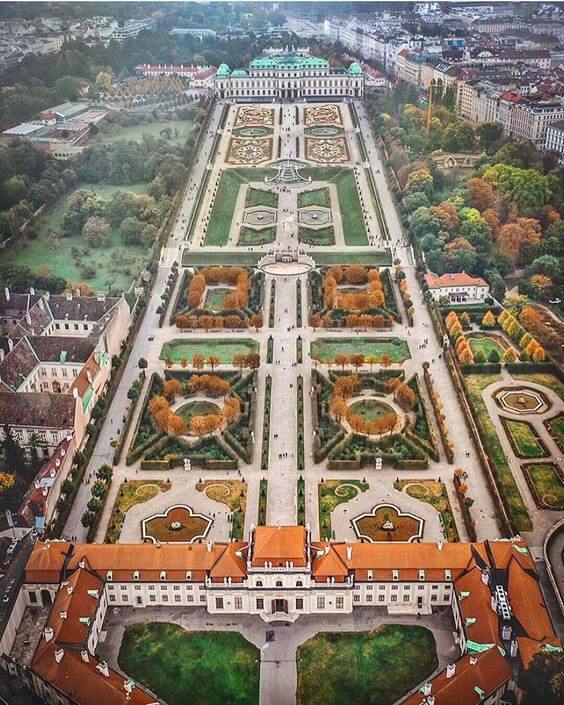
- Privy Garden (Kammergarten) Located on the right side of the Lower Palace and extending to the Orangery in the northern part of the complex. This was the Prince’s private garden, reserved exclusively for him and his close associates.
- Alpine Garden (Alpengarten) – This garden is the oldest of its kind in all of Europe and features rare alpine plants. The plant collection was first displayed at Schönbrunn Palace in the early 19th century until it was moved to the Belvedere Palace gardens, where it is now displayed to visitors. This garden contains a variety of special plants, such as 100 Japanese bonsai trees.
Essential Information for Visiting the Palace Gardens:
Opening Hours:
- April 1st to October 31st – The garden opens at 6:30 AM
- November 1st to March 31st – The garden opens at 7:00 AM
Closing Hours:
- October to February: 5:30 PM
- April: 7:00 PM
- May: 8:00 PM
- June-September: 9:00 PM
- October: 7:00 PM
- November: 5:30 PM
Map of the Belvedere Palace Complex

Art Exhibitions at Belvedere Palace
The Belvedere Palace complex is not only an architectural gem in the heart of Vienna but also a cultural and artistic center featuring several different art exhibitions scattered throughout the complex. Of course, if you just want to admire the impressive palace buildings, you can enter the garden grounds free of charge and enjoy the stunning structures. For those interested in art, the galleries at Belvedere Palace are a must-see! The palace houses the largest collection of paintings by the famous artist Gustav Klimt, including his most renowned work, “The Kiss.” Click here to book advance tickets to the palace and the exhibitions (highly recommended, especially during the summer and winter tourist seasons).

Exhibitions at Upper Belvedere Palace – The Famous “Kiss”
“The Kiss” by Gustav Klimt is the most famous Austrian painting, depicting an embracing couple surrounded by a colorful carpet of flowers. The painting dates to the early 20th century (1907-1908). In this painting, Klimt uses a new and unique technique where he combines gold leaf with oil paints and copper.
This is a permanent exhibition in the gallery. Click here to book advance tickets to the palace and the exhibition.
Exhibitions at Lower Belvedere Palace
- “City of Women” (City of Women) An exhibition of artworks created by female artists between 1900 and 1938. The exhibition will continue until May 19th.
6. Belvedere 21
This museum is located in a modern building adjacent to the palaces and exhibits contemporary and modern art. The museum opened in 1562 and focused on artworks in the spirit of the 20th century, hence its name “20er Haus” (House of the 20s). The museum quickly became an important art center, but in 2001, its contents were moved to the Museum Quarter and exhibited under another museum called Mumok for about 10 years. The building stood empty until its reopening in 2011 as the Museum of the 21st Century, or by its new name, 21er Haus. In early 2018, the museum’s name was changed to Belvedere 21, and it continues to serve as a center for displaying modern and contemporary art.
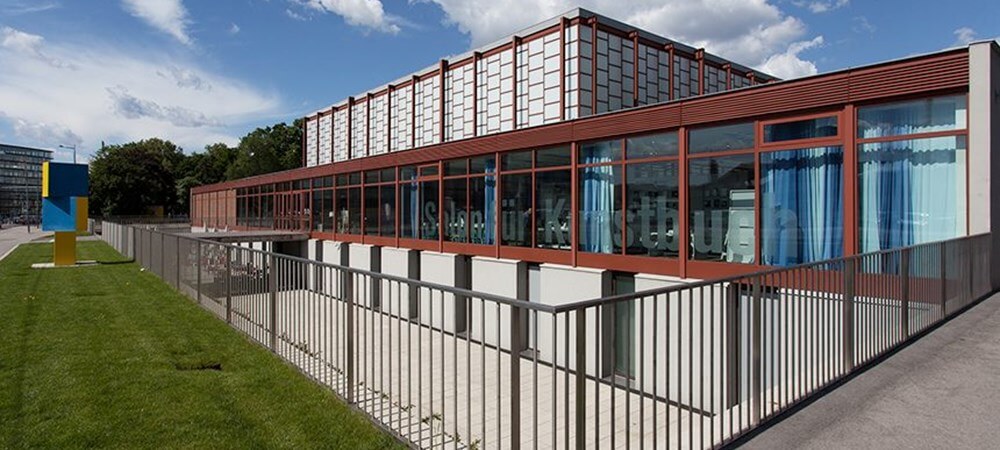
Opening Hours: Wednesday to Sunday from 9:00 AM to 6:00 PM (on Wednesdays and Fridays, admission is possible until 9:00 PM).
Address: Arsenalstraße 1, Quartier Belvedere
Essential Information for Visiting the Belvedere Palace Complex
Costs, tickets, easy public transport options, opening hours, and more!
It’s worth noting that Belvedere Palace and its exhibitions attract many visitors, and especially during the summer season, there are long queues at the entrance. If there are many visitors, you may be asked to wait outside until entry to the exhibition rooms in the palace is possible.
The busiest time is between 11:00 AM and 2:00 PM. It is recommended not to arrive during these hours if you want to avoid unnecessary waiting.
Upper Belvedere Palace:
Opening Hours: Daily from 9:00 AM to 6:00 PM.
Entrance Fees for online ticket purchases: Adult €17.50, Child (under 19) – Free, Pensioners and Students (up to 26) – €14.10. For the full price list, visit the palace’s website. Click here to book advance tickets for the palace and its various exhibitions.
Address: Prinz Eugen-Straße 27
How to Get There?
You can reach Upper Belvedere Palace by subway, tram, or bus.
- Subway: Take the red line, U1, to Südtirolerplatz station (the main railway station). From there, it’s about a 15-minute walk. Map
- Tram: Line D to Schloss Belvedere station.
- Bus: Line 69A to Quartier Belvedere station.
Lower Belvedere Palace, Orangery, and Royal Stables
Opening Hours: Daily from 9:00 AM to 6:00 PM.
Please note: Entry to the stables is only possible until 12:00 PM.
Entrance Fees: Adult €13.90, Child (under 19) – Free, Pensioners and Students (up to 26) – €10.90. For the full price list, visit the palace’s website.
Address: Rennweg 6
How to Get There?
You can reach Lower Belvedere Palace by tram.
Tram:
- Line 71 to Unteres Belvedere station.
- Lines 2 to Schwarzenbergplatz station. From there, it’s a few minutes’ walk.
Belvedere 21
Opening Hours: Tuesday to Sunday from 11:00 AM to 6:00 PM (on Thursdays, admission is possible until 9:00 PM).
Entrance Fees: Adult €8.90, Child (under 19) – Free, Pensioners and Students (up to 26) – €6.90. For the full price list, visit the palace’s website.
Address: Arsenalstraße 1, Quartier Belvedere
How to Get There?
You can reach Belvedere 21 Museum by subway, tram, or bus.
- Subway: Take the red line, U1, to Südtirolerplatz station (the main railway station). From there, it’s about a 15-minute walk. Map
- Tram: Line D to Quartier Belvedere station.
- Bus: Line 69A to Quartier Belvedere station.
Combined Tickets for Entry to the Belvedere Palace Complex
- Klimt Ticket (Allows entry to Upper and Lower Palaces)
- Belvedere Ticket (Allows entry to Upper and Lower Palaces and Belvedere 21 Museum)
For the full price list, visit the palace’s website.
Click here to book advance tickets for the famous exhibition at the Palace, including “The Kiss.”
Additional Information
- Official Website: 0043179557-0
- Email: info@belvedere.at
- Map:

